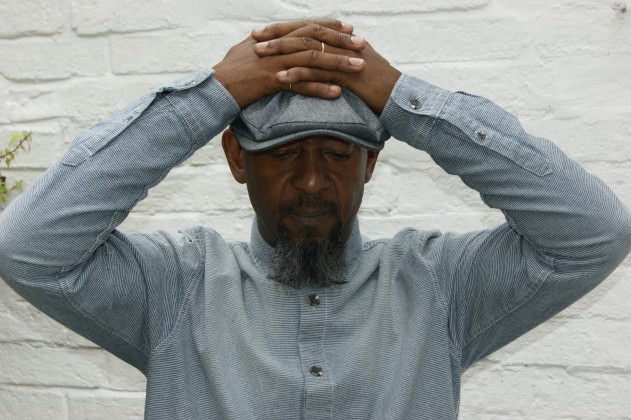Tech-house master Colin McBean’s new album comes just eight months after his last long-player. Attack editor Greg Scarth gets the inside story on the making of Night On The Town.

It’s the day after the release of his new album when I call on Colin McBean, and he’s already back in the studio working on a remix for Kenny Dope. “That’s how my world is, man,” he explains. “It’s a way of life, and I enjoy it: just studio, studio and more studio.”
McBean’s career in music production stretches back to the early 90s, first with KCC, then as a member of pioneering UK techno duo The Advent, and then as a solo artist, building up an extensive back catalogue of releases on labels including Rekids, Defected and his own Phoenix G imprint.
His latest release, A Night On The Town?, is a concept album of sorts, based around an imagined experience at McBean’s dream club, but as he explains, “this album wasn’t meant to be”. The spark of inspiration came almost by accident when he upgraded his studio setup. “After all these years of using crap monitors I finally decided to buy a new pair,” he tells me. “I was talking to Tom Rio from Just Jack about equipment and he asked if I had good monitors. I said no, then he said if I got some my life would change. That stuck with me: my life would change…”
Eventually settling on a pair of Questeds, McBean set about making a series of quick jams to get to know the new speakers and set them up in his small home studio. “As I went along I’d be like, ‘Hmmm, that one’s actually quite good. I’ll finish that one.’ I’ve got a thing about finishing tracks whether they’re good or bad.” After playing some of the recordings to his partner (“the harshest critic for any man”), he was encouraged to compile a selection of the tracks as a project, enlisting the help of video producer Victoria Cocks to create a series of visuals to accompany them.
The result is an album which McBean describes as “industrial, grungy and a bit grainy – not the usual vocals in there, just more of a tripped-out zone”. We asked him to talk us through it, track by track.
Entrance
The whole album is like my perfect eight-level club, somewhere on a dark industrial estate. So the idea is that ‘Entrance’ is level one, you’re approaching the club, you enter the room and all of a sudden that’s when the bass drops. This track’s quite special for me because it’s just hypnotic.
If I can’t give you anything more, it’s got to be quality. That’s always been my mark with everything I do. Quality over quantity, you know?
A lot of the tracks on the album are quite short. The best DJs or live shows I’ve ever heard, I’ve always wanted more. With my live shows I only do two a month and I think less is always more. You don’t want to be saturated, you want people to look forward to you coming. If I can’t give you anything more, it’s got to be quality. That’s always been my mark with everything I do. Quality over quantity, you know?
The whole album’s made on the MPC 2000XL, a couple of bits of outboard and a mixer. That’s it. I work live, I don’t pre-record anything, but I never think ahead to the live show when I’m making tracks. The live show is a pain in the backside because I make loads of tracks and I’m terrible at organisation. To me it’s more important to get the writing down, and many a time I forget to save or label things. When I’m thinking a track would work in the live show, by the time I look round it’s like, ‘Oh shit, where were the parts? What did I save them on?’ and there’s a million white CDs and unlabelled DATs around me. The live show usually ends up with me saying, ‘Fuck, let’s go in the studio and write a new track.’
Inhibition
This track’s all about when you go to a new club, you think, ‘Where’s my spot?’ You might walk around, look at the bar, look at the people, listen to the music, but then one track grabs you and find your place in the club.
It’s live, so if you mess up you have to start again. Most of my popular tracks are probably done on the first or second take.
I love those latin funk drums on this one. That whole latin, shake it, get intense thing. Then the bell comes in and for me in the studio that’s like, OK, how crazy can I go? How far can I push the EQ without the whole lot breaking up? Because it’s all mixed down live, if you mess up you have to start again. I can’t ever sit there and do a straight pass of anything, that’s not how I roll. There’s no arrangement in the MPC. All the cuts, all the drops, everything’s done by memory, so they change.
Most of my popular tracks are probably done on the first or second take. It’s just learning your art form. It’s really knowing when’s enough. I always finish a mix, even if I hate it once I’ve started it. It’s about learning how to get round problems. I know lots of people who’ve got lots of music on hard drives, waiting to be finished, but what good is it there?
Sub Level 3 (G’s Freak Zone)
This track was a really core point in making the album. I’d been working with the EQs on the mixer the night before and everything was in minus. Instead of boosting the EQ, everything was taking things away. So when I started to write this track and ran the MPC through the board, I didn’t realise.
you can actually hear the moment where I realised, ‘Oh shit, all the EQ’s backwards’
I was quite happy with the sound I had, this sub in the room. I was just like, ‘Pleeeease don’t break up, this is amazing!’ Then all of a sudden you can actually hear the moment where I realised, ‘Oh shit, all the EQ’s backwards’ and the whole thing starts to open up like a flower – the drums come up, the synths sound bigger. That was just like, ‘Wow. Hold onto this one, Colin. Don’t lose this one’.
The synth sound’s from a Waldorf Blofeld. I love some of the sounds it can make but the way it works isn’t intuitive, so I went back in and sampled it. I like to flick through sounds quite quickly when I’m working and for some reason the volume’s different on each sound. It’s a pain. I just want you to give me the sound and let me deal with it, not have to open parameters. So what I did was I just went in and spent a day sampling the sounds I liked.
Fixated
This one’s when you’re in your spot, you might see a girl or whatever and the music’s just amazing, you’re just stuck. You’re in this place and you can’t get out. I’ve been there many times when I’ve loved something and it’s like, ‘Ah man, I need to go home but this is killing me, it’s so right’.
it’s like the devil and the deep blue sea: really you should be going home but you’ll just stay a bit longer.
It’s got this really druggy, almost rock type of thing going on. There’s a big rock guitar stab in the middle of it and it’s like the devil and the deep blue sea: really you should be going home but you’ll just stay a bit longer.
The echoes on the drums come from this old vintage Roland micro effects unit I bought. I plugged it in and it gave a really great old-fashioned effect. I think some of the drums are sampled from the 909 and some I made on the Korg MS2000. That is the lifeblood of the studio, man. Every time I try to remove that synth, nothing comes close. It’s what it says on the box: knobs and buttons, and play. It’s so easy to change any setting, I could use mine forever. When you use hardware, whatever you’ve used it has a different sound. It’s not the same working in the box. It doesn’t really compete.

03.17 PM
Loved the imagery in Mr. G’s descriptions
03.22 PM
Props to Colin. In all his years, I’ve never heard a bad Mr.G track. Always brings the funk and always sounds fresh.
09.14 AM
What mixer does Mr G use?
10.25 AM
aNdY – he uses a Mackie 8-bus
11.41 PM
Hey thanks!